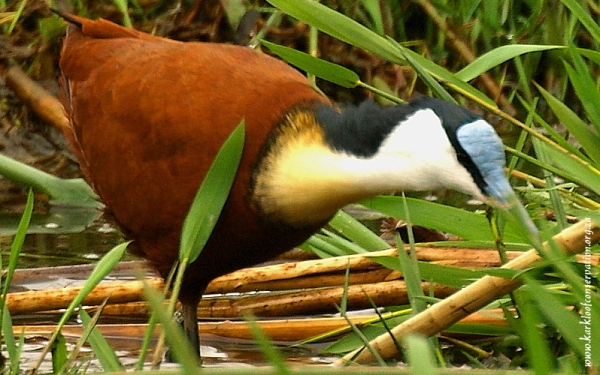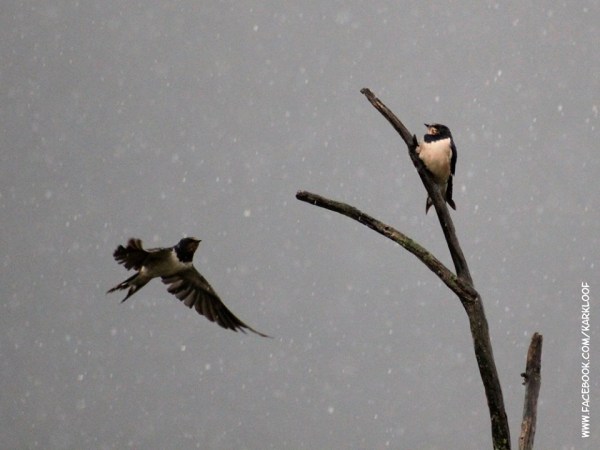Christeen Grant of “Sitamani”
This month’s Sitamani Sightings are dedicated to remembering my friend Prof. David Clulow. He shared my love of nature and was always supportive of these sightings, usually the first to comment on the Midlands Conservancy Forum blog each month and often emailed to share his delight. Some of my best memories of Dave were botanizing on hillsides in bright sunshine, examining the colourful array of flowers on display. May you rest in peace Dave, your enthusiasm for life in all its forms will long be remembered.
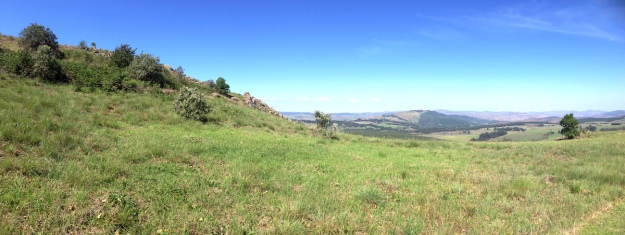
Green desert
A green desert best describes this October. Usually the rains have started, spring greens ripen into a lush growing vibrancy. This year, however, is dry and drought conditions are even harder in other parts of KwaZulu-Natal. Showers brought promising rainbows only to be dried in hot winds that followed.
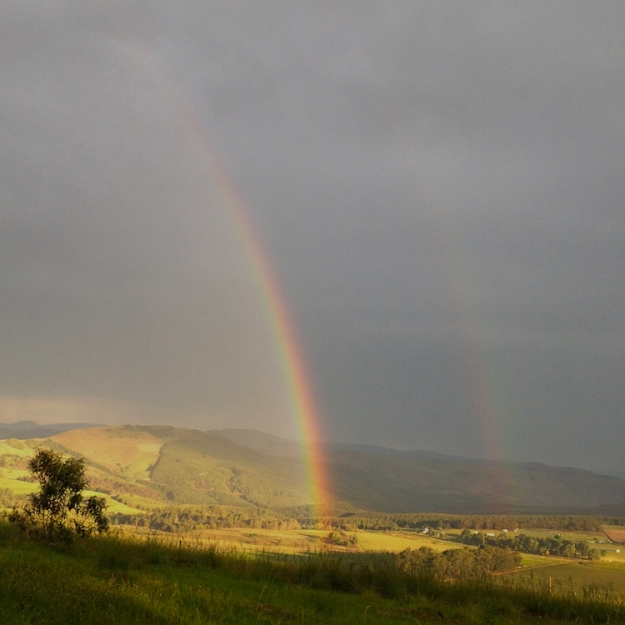
In the evening of 29 October I spotted a very unusual bee-type insect on a window sill. Craig Peter, Assistant Prof. at Rhodes University identified it for me, saying that the insect itself wasn’t special, but the fact that it had two bright yellow pollinaria attached to it’s head was. The Large Leaf-cutting Bee, Megachile cinta, is a known pollinator of Eulophia streptopetala. A fruitless search for the orchid ensued, however, these bees are capable of flying great distances, so perhaps in Boston there is a Eulophia streptopetala in flower! (pg. 246 in ‘A Field Guide to Wild Flowers KwaZulu-Natal and the Eastern Region’ Elsa Pooley, pub. Natal Flora Publications Trust) At the CREW Summer Rainfall Workshop in November 2014 at Highover, a very interesting talk “The Sex Life of Plants” by Steve Johnson, described the process and we saw a Eulophia streptopetala flowering there!
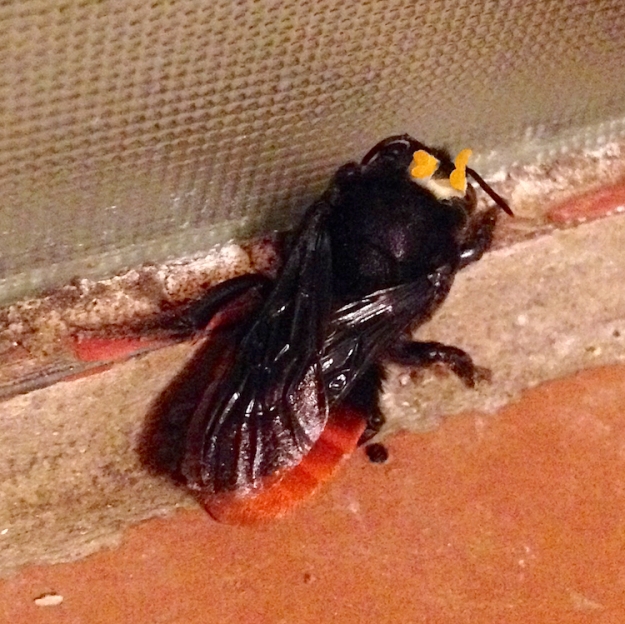
Large Leaf-cutting Bee Megachile cinta with pollinaria
Insect life is buzzing, the annual migration of Brown-veined White, Belenois aurota aurota, butterflies started on the 11 October, but in very small numbers and so far I’ve only seen about 150 individuals.
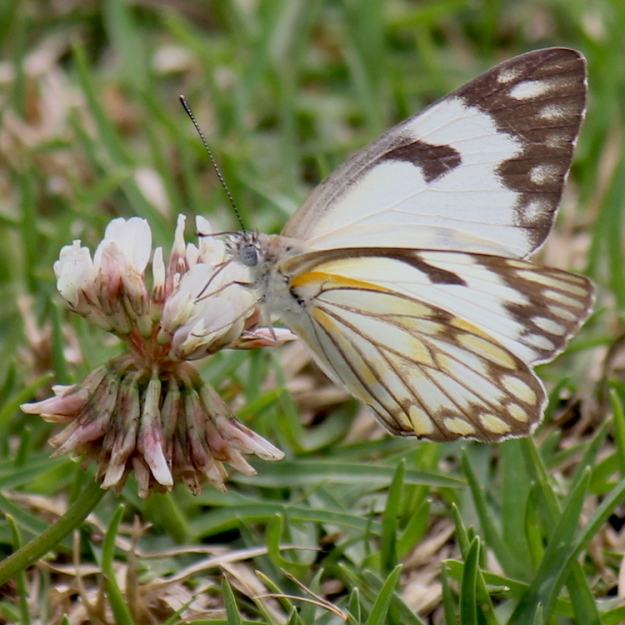
Brown-veined White Butterfly – Belenois aurota aurota
Gaudy Commadores, Precis octavia sesamus, are now in their orange and black summer form. Painted Lady, Vanessa cardui, obligingly posed for me sipping nectar from Vernonia hirsuta. Grasshoppers flik-flack in the grass as you walk through.
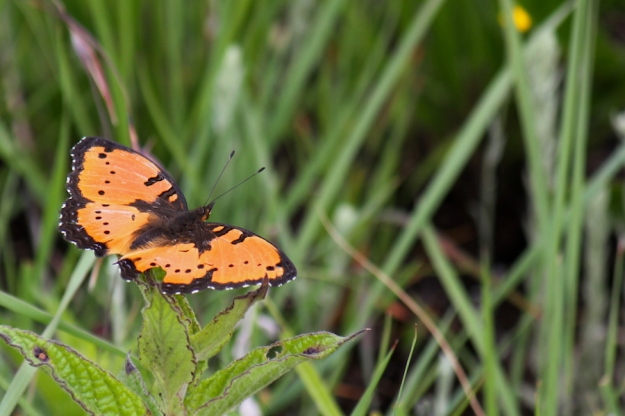
Gaudy Commadore – Precis octavia sesamus
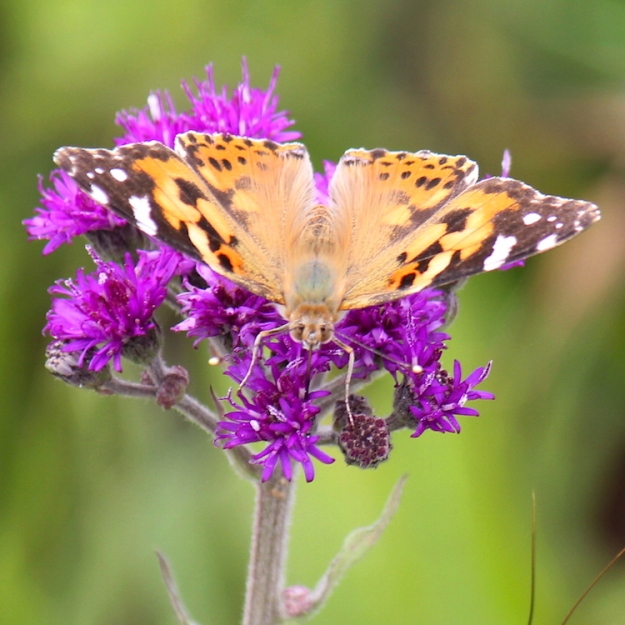
Painted Lady – Vanessa cardui on Vernonia hirsuta
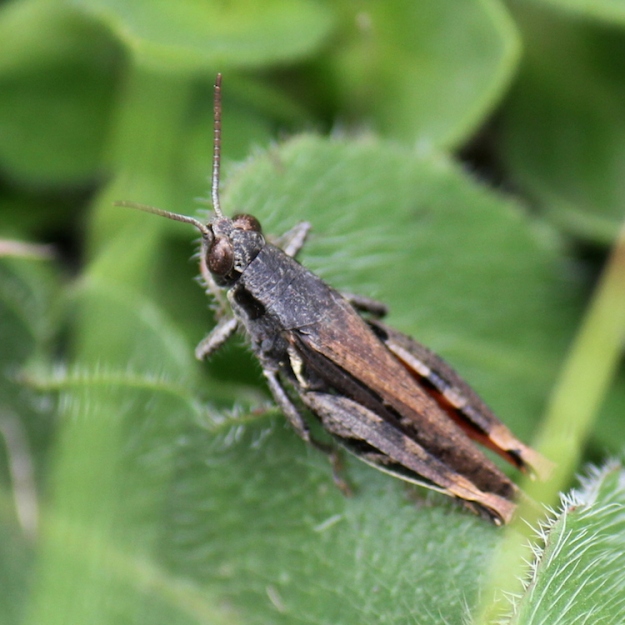
Grasshopper – Canantops humeralis
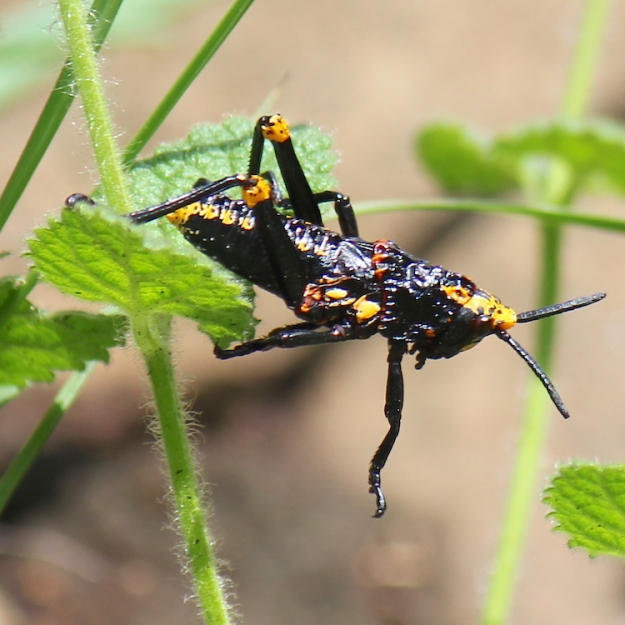
Nymph of a Foam grasshopper
A most interesting and very small Hemerobiidae, Brown Lacewing perched on the sink.
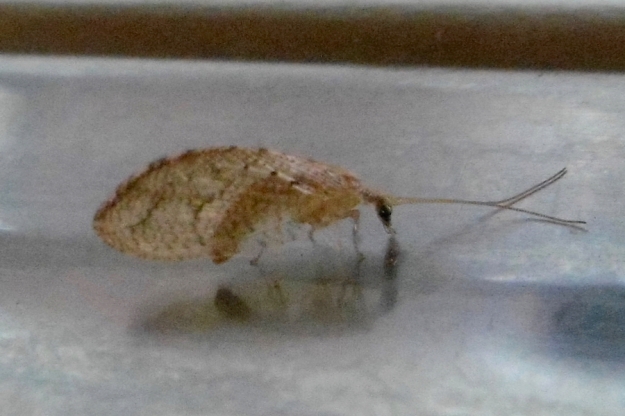
Hemerobiidae – Brown lacewing
Then if anyone knows which insect could have made this beautiful felted home on a narrow leaf I would be grateful!
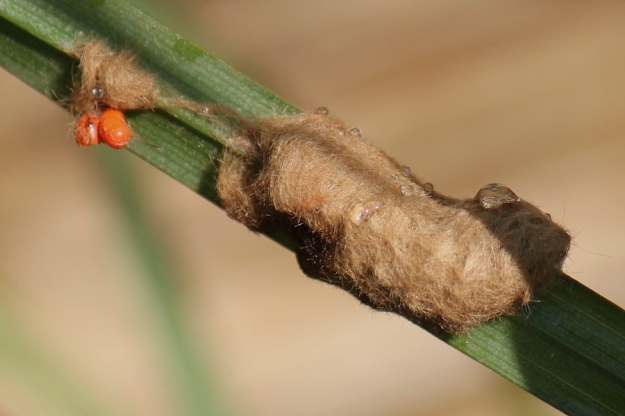
Insect home – any help on an ID would be great
Attached to a flower was this Bagworm, a moth larvae, Family Psychidae.
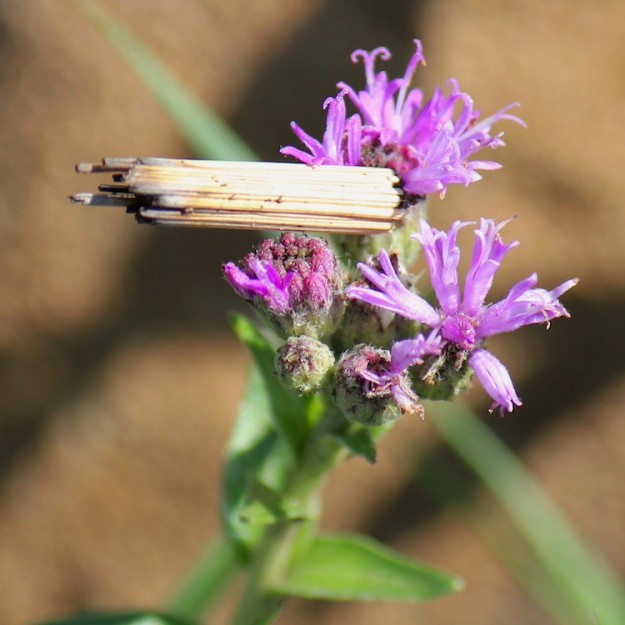
Bagworm Family – Psychidae
Several moths were seen, Cherry Spot, Diaphone eumela, Common or Cabbage Tree Emperor, Bunaea alcinoe, an Emperor sp. and Tri-coloured Tiger, Rhodogastria amasis, caterpillar known as a Wooly Bear.

Cherry Spot – Diaphone eumela
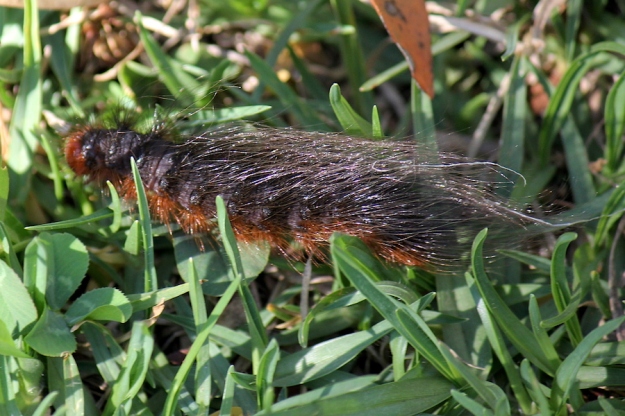
Tri-coloured Tiger caterpillar
The Red-Chested Cuckoo, Piet-my-Vrou, was first heard on the 19 October. The Lesser Striped Swallows were much later in arriving this year, first seen on the 29 October instead of the beginning of the month. The Olive Thrush is a perennial around the house, though very camera shy.

Olive Thrush
A delight is the colony of weavers that have decided to nest in the Pin Oak near the garage. I’m not sure if they are Village or Southern Masked Weavers. It is the first time they are building in such numbers. Much stripping of new leaves, then very showy construction of the nests. The strong winds keep ripping the nests off the branches, and persistently the males start all over again…
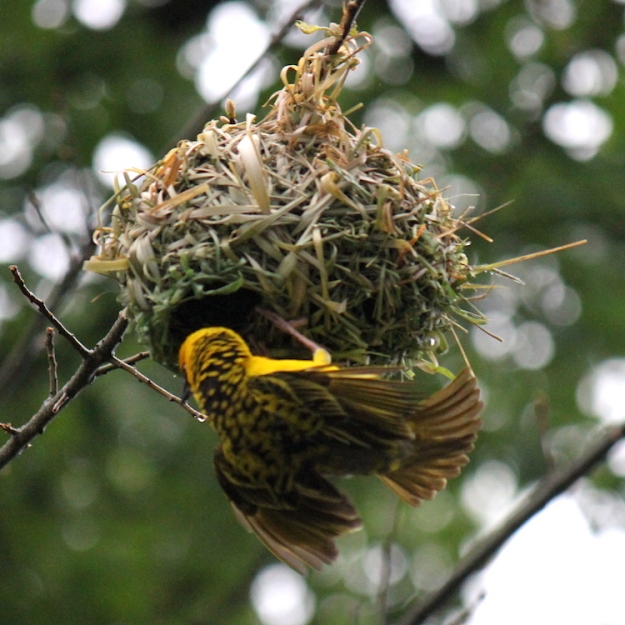
Village Weaver
Although the size and numbers of flowers is way down, the variety sparkles: Argyrolobium sp., Asclepias albens & humilis, Clutia cordata, Cyphia elata, Delosperma hirtum, Dierama cooperi, latifolium & pictum, Eriosema kraussianum, Graderia scabra, Hebenstretia comosa & dura, Hirpicium armeroides, Hypoxis iridifolia, Indigofera hilaris, Kniphofia bracystachya, Ledebouria cooperi, Lotononis corymbosa, Monopsis decipiens, Pentanisia prunelloides, Raphionacme hirsuta, Stachys aethiopica, Trachyandra asperata, Vernonia hirsuta, natalensis & a Vernonia sp., and Xysmalobium parviflorum.
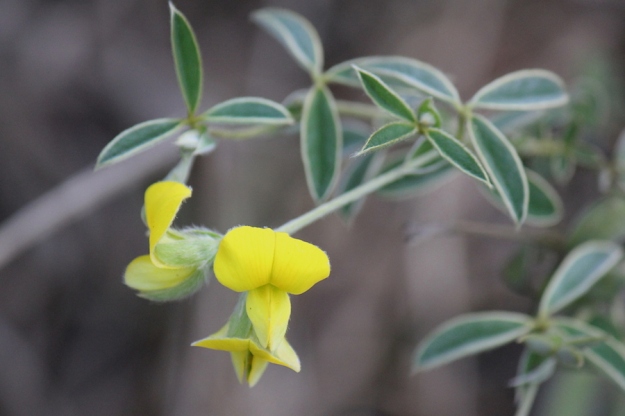
Argyrolobium sp
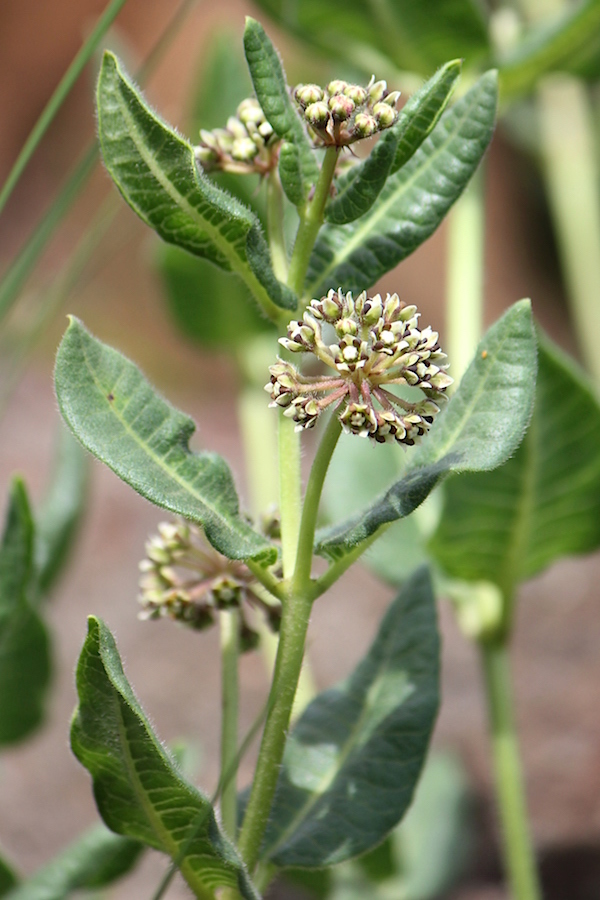
Xysmalobium parviflorum
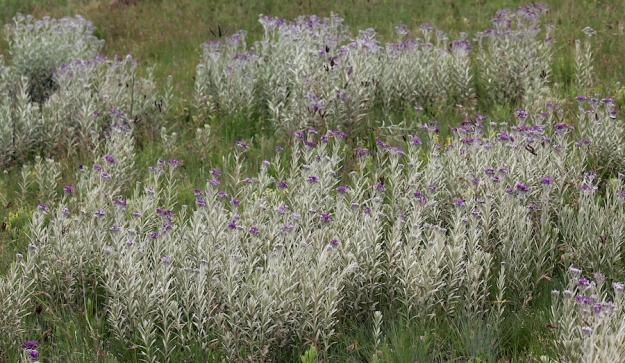
Vernonia natalensis
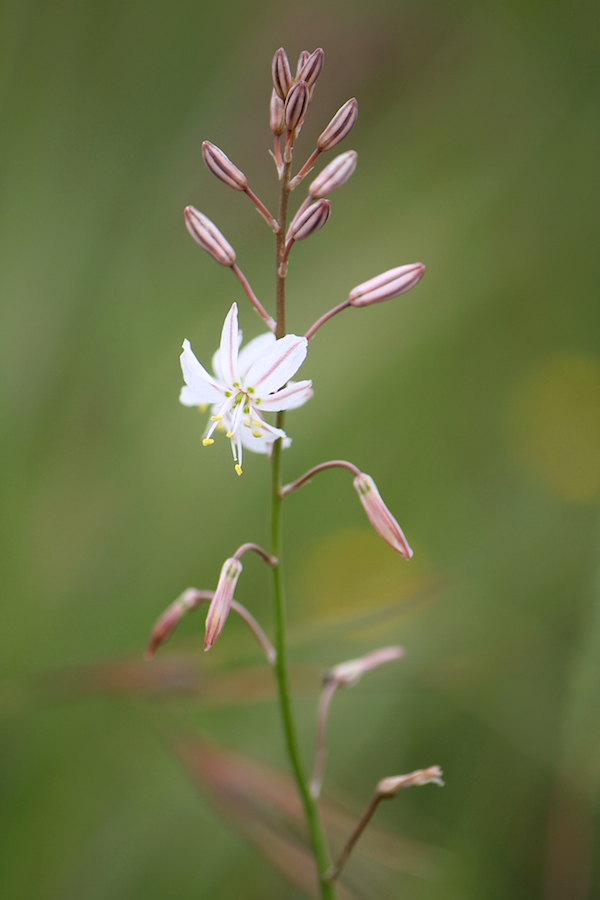
Trachyandra asperata

Stachys aethiopica

Monopsis decipiens
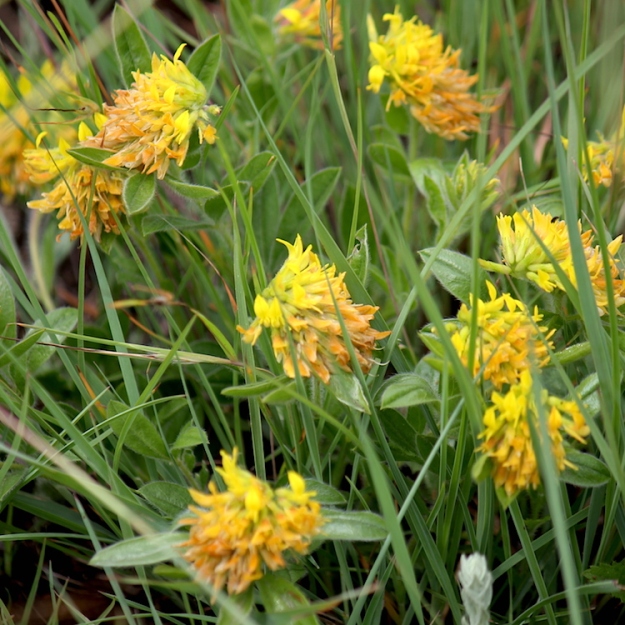
Lotononis corymbosa
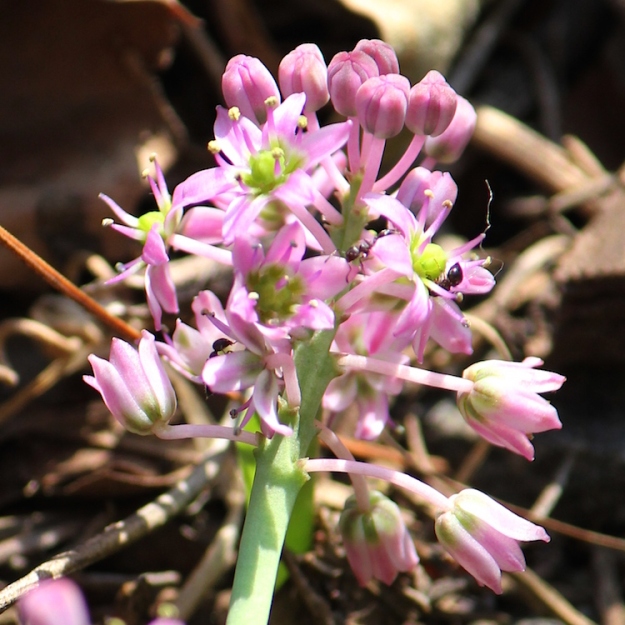
Ledebouria cooperi
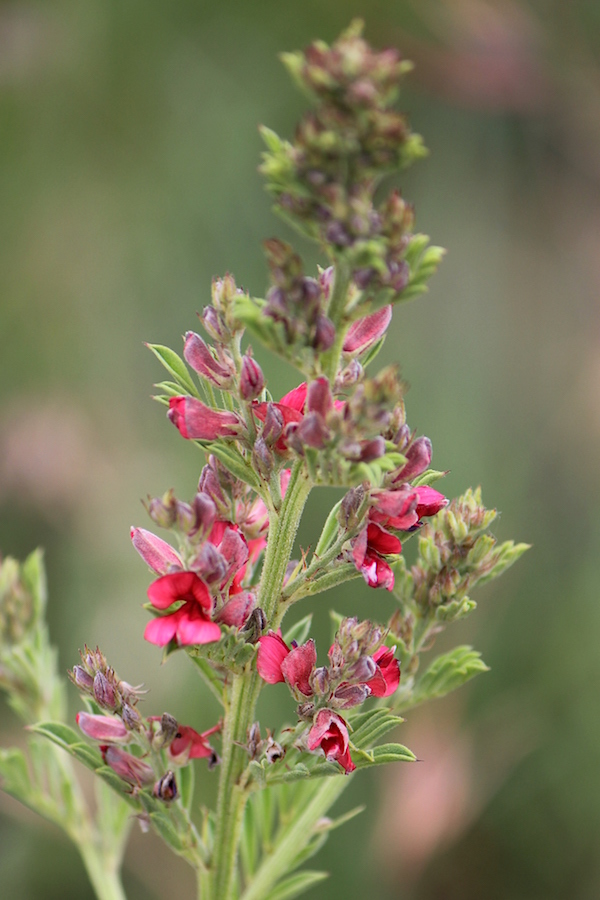
Indigofera hilaris
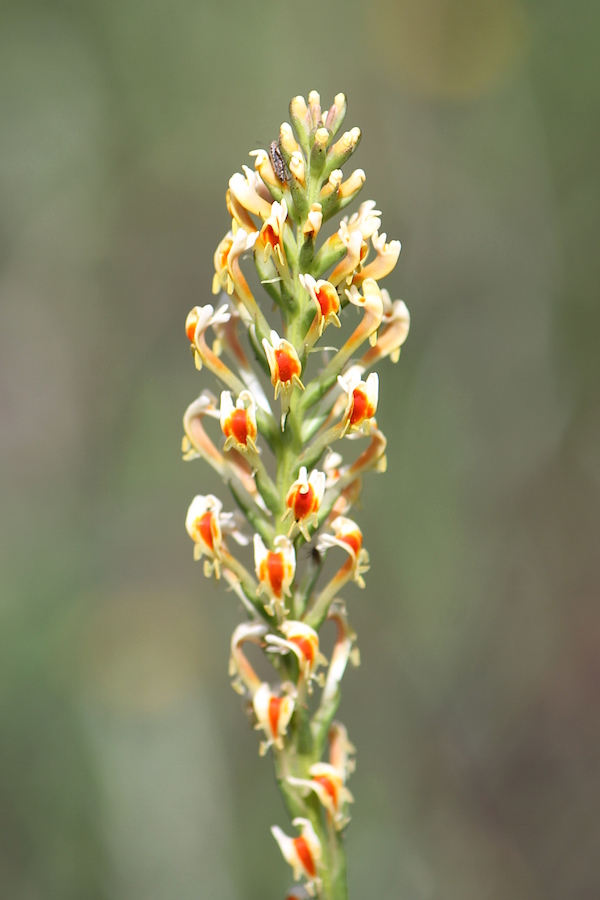
Hebenstretia dura
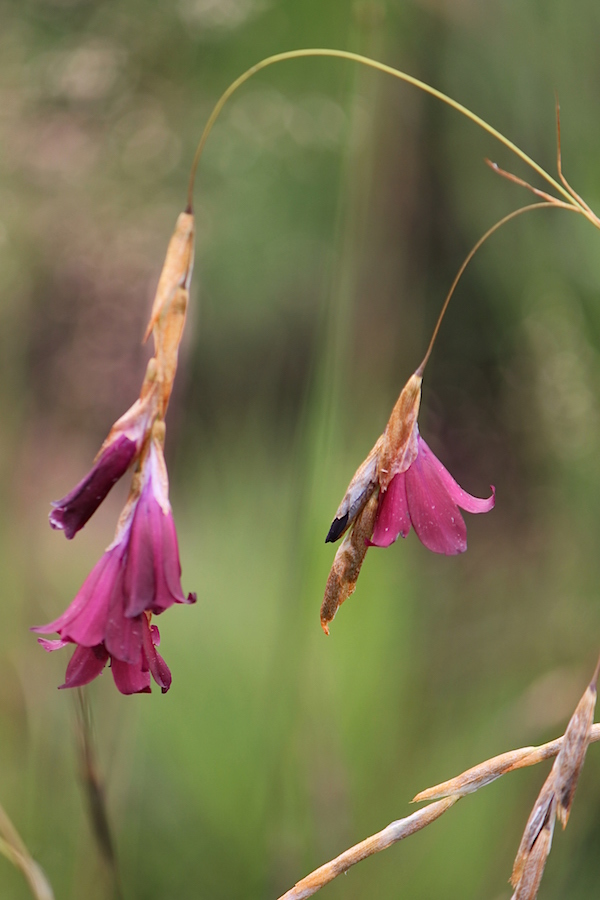
Dierama pictum
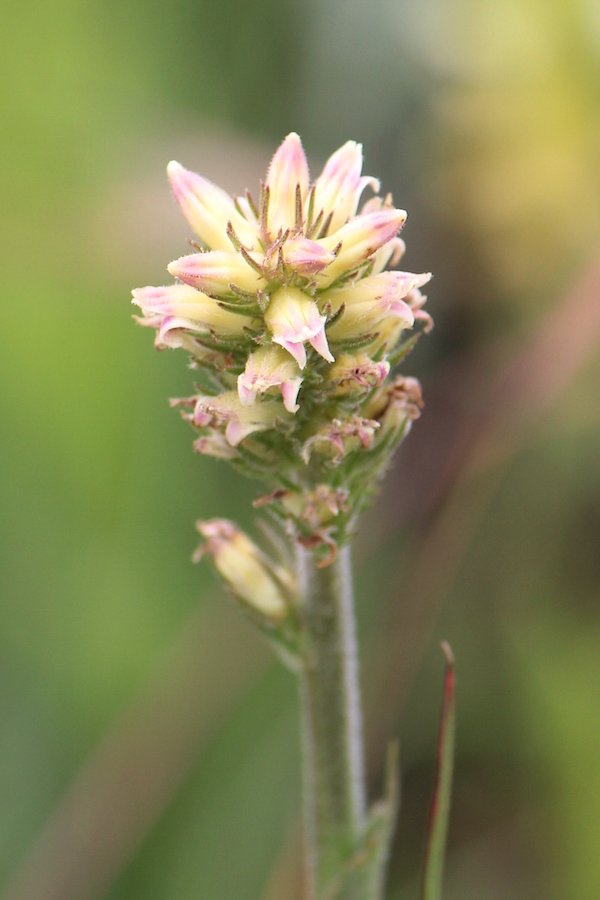
Cyphia elata
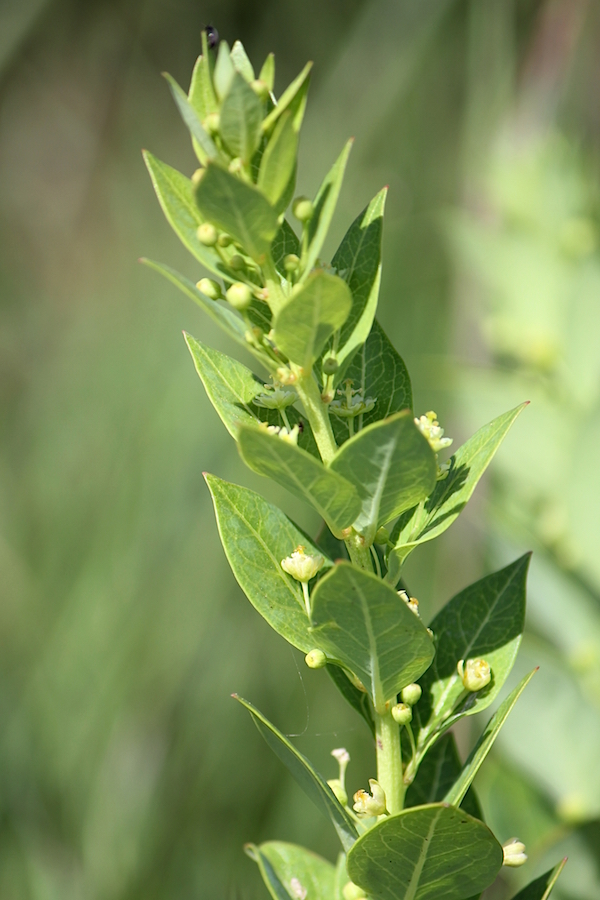
Clutia cordata
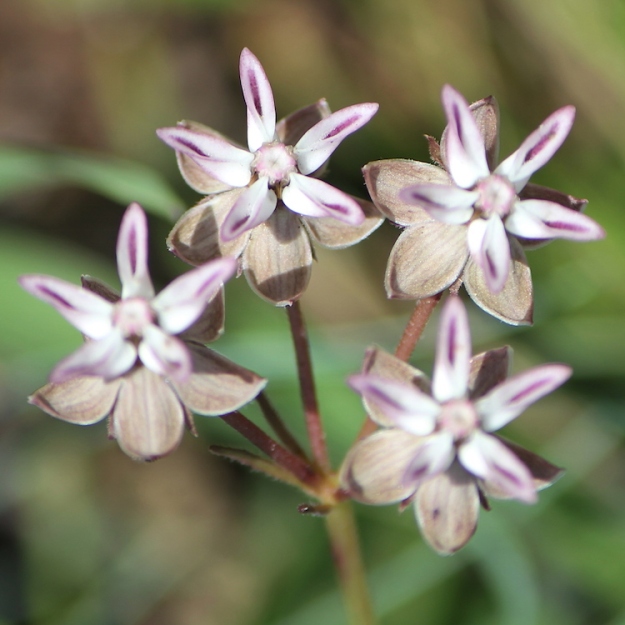
Asclepias humilis
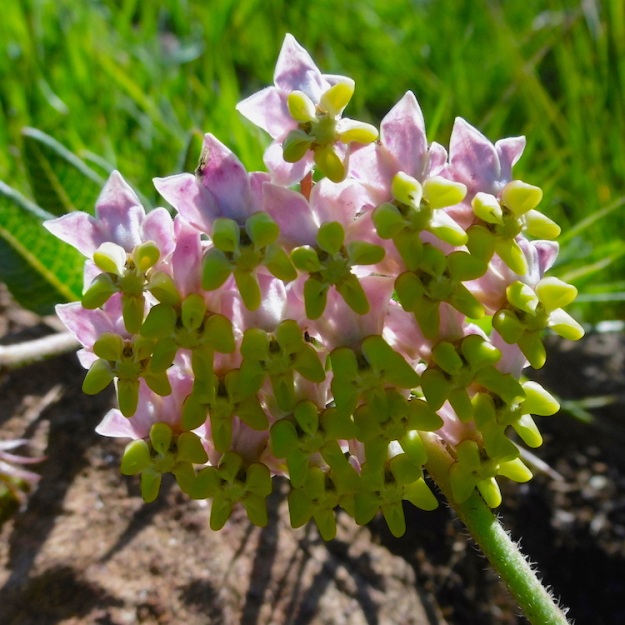
Asclepias albens
Grasses are seeding very quickly, though the leaves aren’t growing to cover the soil yet. As I left early one morning a duiker played hide-and-seek along the driveway of Pin Oaks.
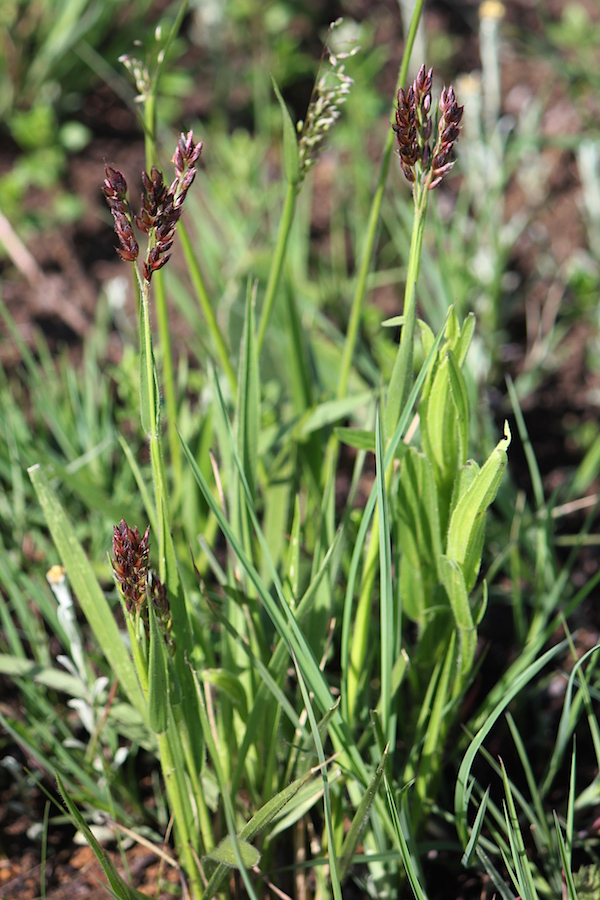
Grass
Crystelle Wilson of “Gramarye”
ON several mornings this month we saw a duiker at the dam on The Drift.

Common (Grey) Duiker
A new visitor to my garden was a Cardinal Woodpecker, tapping away in the buddleia outside the bathroom window.
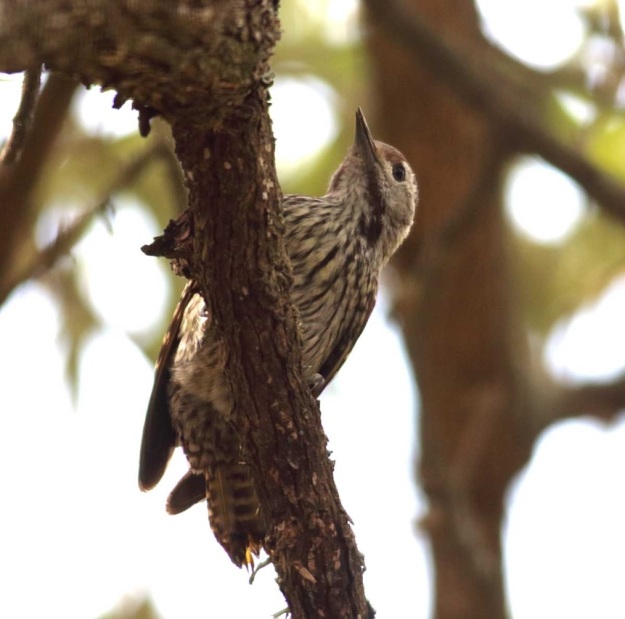
Cardinal Woodpecker
In the wetland a newcomer was a pair of Wattled Lapwings, which I haven’t seen there for some years.
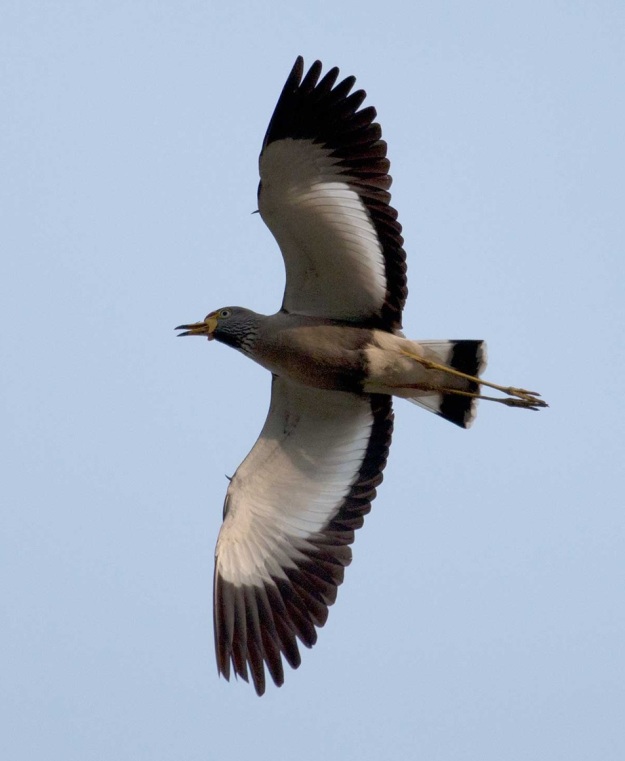
Wattled Lapwing
The surviving Grey Crowned Crane juvenile that was ringed in March appears to have finally left its natal area and gone off to join the floater flock in the district. The parents is spending a lot of time at the nesting site on The Willows and might be getting ready to breed again. We call one of the pair “Danglefoot”, because of a leg always hanging oddly in flight, and which enable us to identify the pair as “ours”.
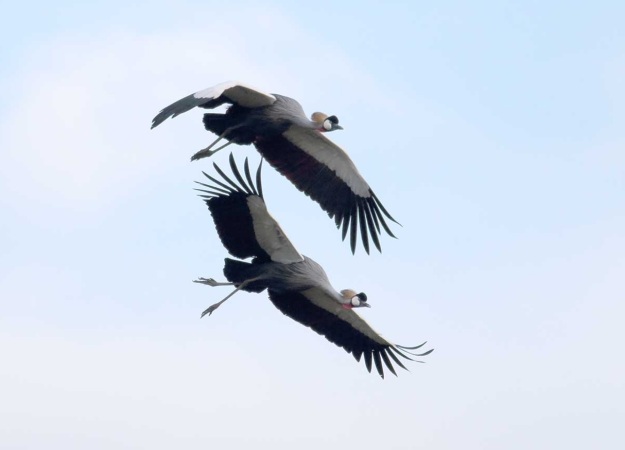
Grey Crowned cranes coming in to land at the nesting site where they successfully raised one of three chicks this year.
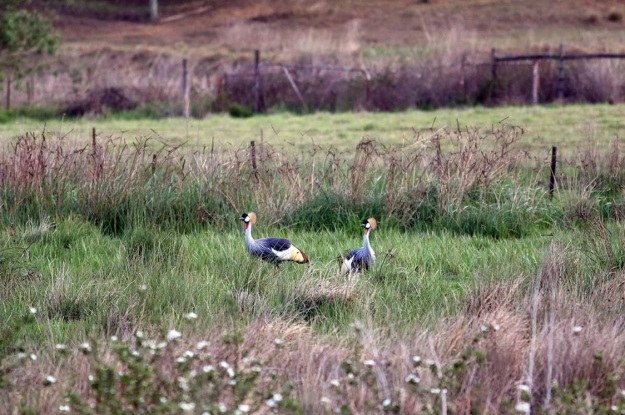
Grey Crowned Cranes
I’ve seen two pairs of Blue Cranes flying over Gramarye and often hear them calling in the early morning. The good news is that the pair of Blue Cranes on Endeavour seems to be breeding. I saw one of them feeding while the other was presumably on the nest.
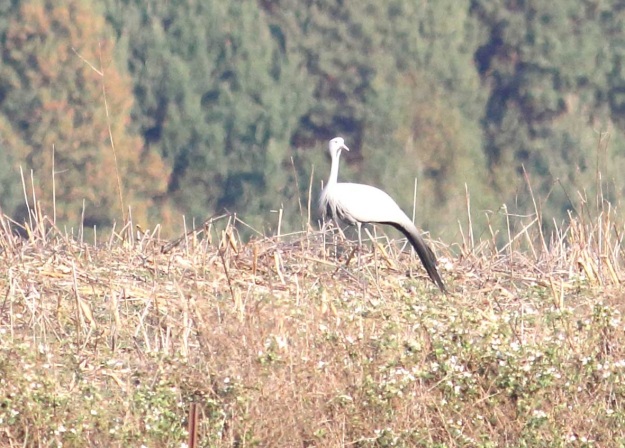
Blue Crane
The willow tree in the dam on Elvesida where the cranes roosted overnight during winter had now been taken over by at least two pairs of African Spoonbills
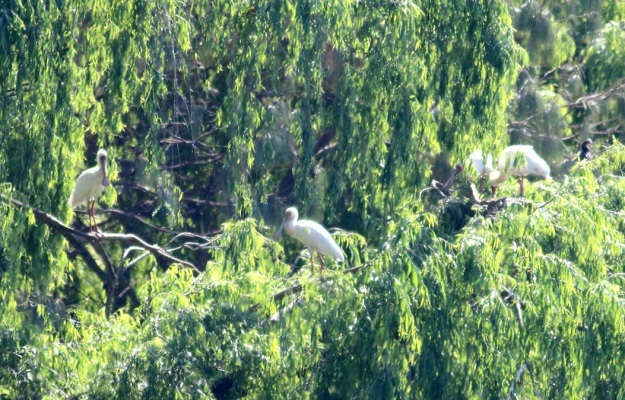
African Spoonbill
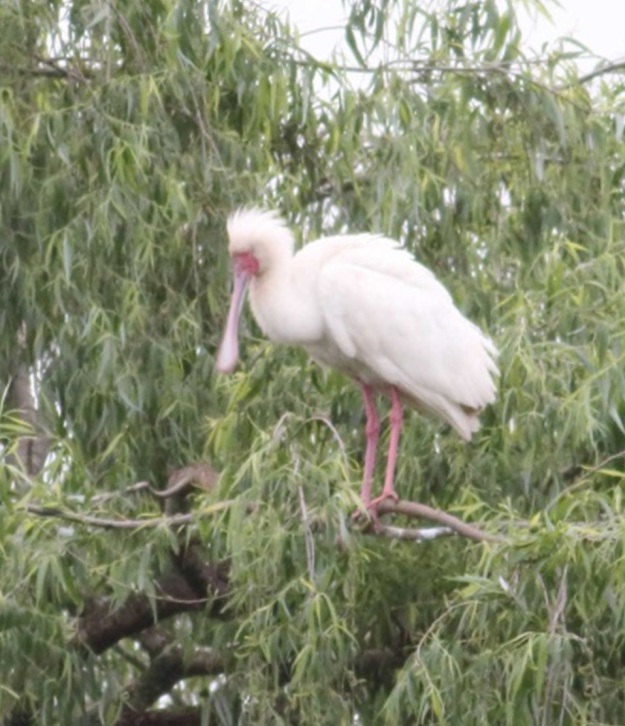
African Spoonbill
The atlas list for the Elandshoek pentad 2935_3000:
Jackal Buzzard, Great Egret, African Reed-warbler, Cardinal Woodpecker, Diderick Cuckoo, Barn Owl, Pied Crow, Secretarybird, Neddicky, Yellow-billed Kite, Long-crested Eagle
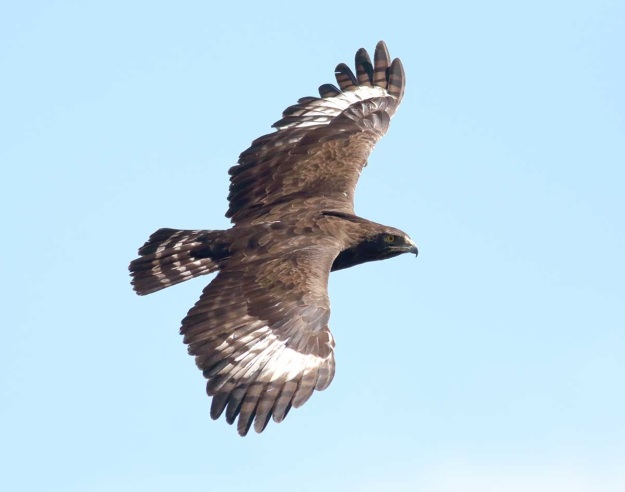
Long-crested Eagle in flight
Southern Double-collared Sunbird, Black Cuckoo, Sombre Greenbul, Lesser Swamp-warbler, Red-billed Teal, Three-banded Plover, South African Shelduck, Blacksmith Lapwing, Grey Heron, White-throated Swallow, Speckled Pigeon, African Harrier-Hawk, House Sparrow, Southern Grey-headed Sparrow, White-rumped Swift, Amethyst Sunbird, Fork-tailed Drongo, Cape Canary, Village Weaver, Bokmakierie, Helmeted Guineafowl, Orange-breasted Waxbill, Red-knobbed Coot, Giant Kingfisher, Common Moorhen, Little Grebe, Spur-winged Goose, Egyptian Goose with chicks
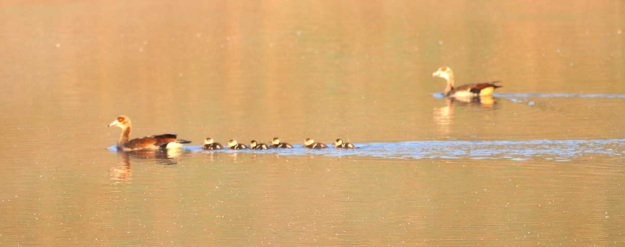
Egyptian Goose with chicks
Cape Weaver in full breeding colour
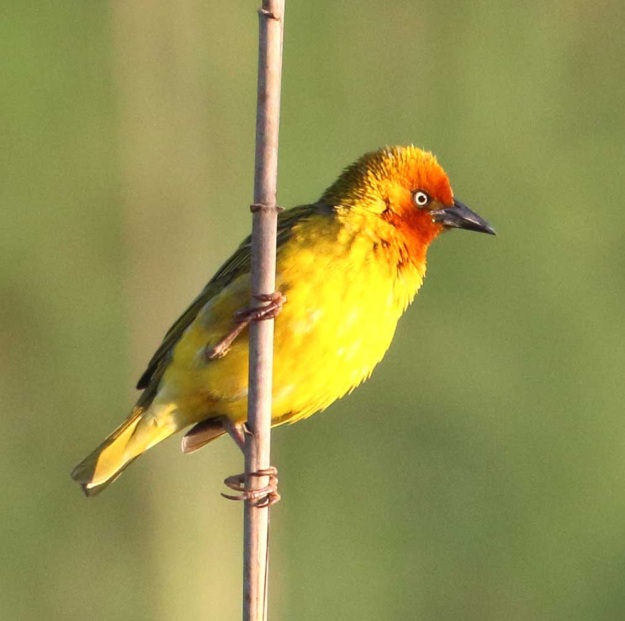
Cape Weaver in breeding plumage
White-breasted Cormorant, Cape Sparrow, Reed Cormorant, Cattle Egret, Yellow-billed Duck,
African Darter, African Rail, Brown-throated Martin, Red-collared Widowbird, Red-billed Quelea,
African Pipit, Zitting Cisticola, Common Quail, Common Fiscal, African Dusky Flycatcher, African Paradise-flycatcher,
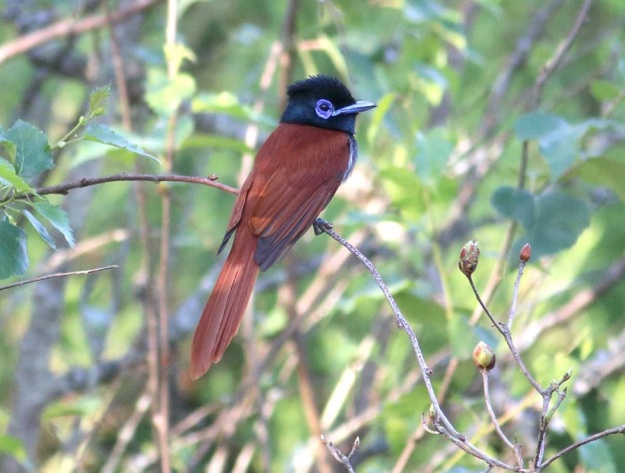
African Paradise-Flycatcher
Red-necked Spurfowl, Black-headed Oriole, Southern Boubou, Black-headed Heron, Pin-tailed Whydah (change into breeding colours nearly completed, tail needs some work)

Pin-tailed Whydah
Southern Red Bishop changing into its wedding outfit is a crazy mix of colours
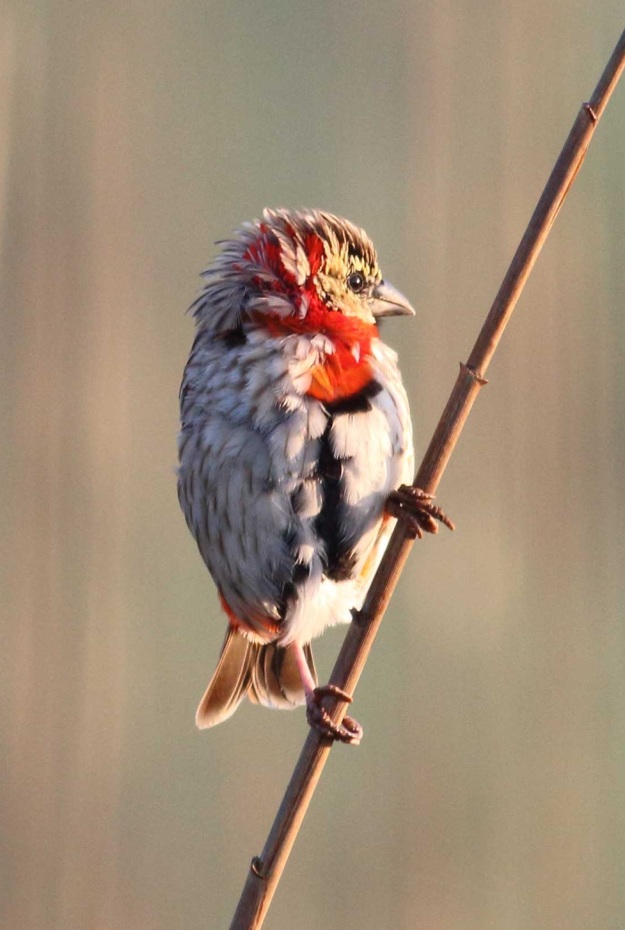
Southern Red Bishop
Cape Longclaw, Cape Crow, African Hoopoe, Cape Grassbird, Cape Robin-Chat, Drakensberg Prinia, Dark-capped Yellow Warbler, Little Rush-warbler, Fan-tailed Widowbird, Levaillant’s Cisticola, African Stonechat, Cape Wagtail, Greater Striped Swallow, Black Saw-wing, Cape Turtle-dove, Red-eyed Dove, Dark-capped Bulbul, Speckled Mousebird (cooling off on a hot day)
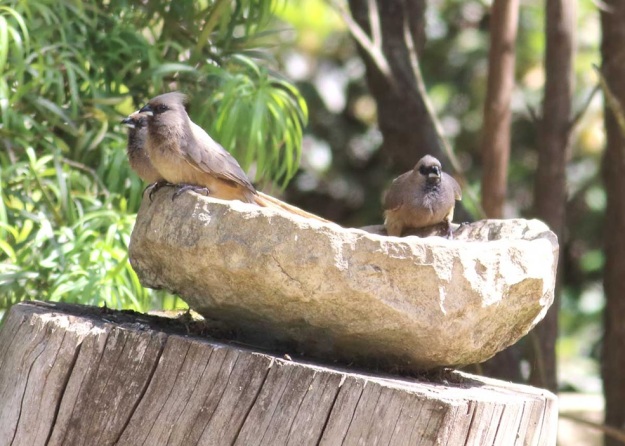
Speckled Mousebirds cooling off on a hot summers day
Olive Thrush

Olive Thrush





